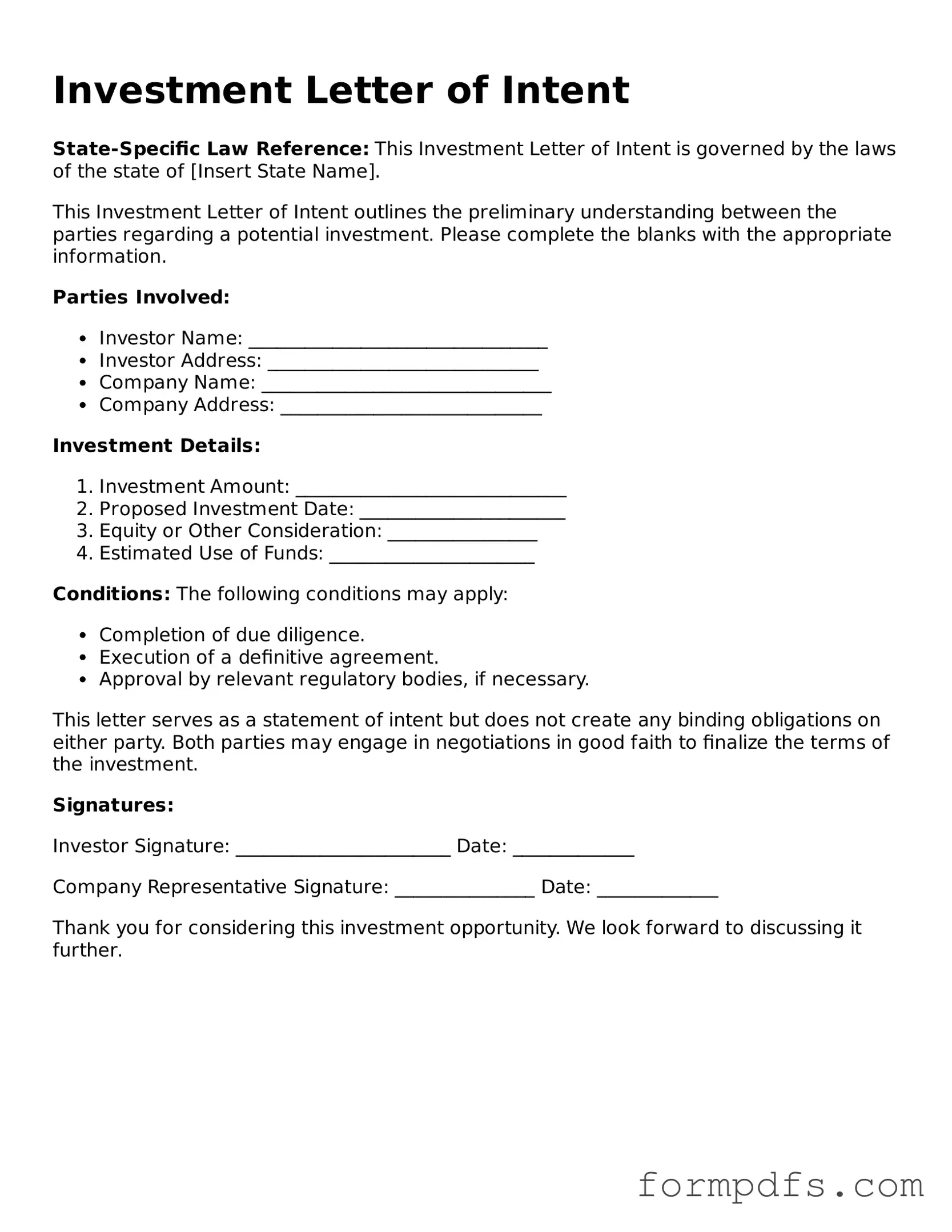What is an Investment Letter of Intent?
An Investment Letter of Intent (LOI) is a document that outlines the preliminary understanding between parties regarding a potential investment. It serves as a starting point for negotiations and indicates the intent to move forward with a deal, although it is not legally binding. The LOI typically includes key terms such as the amount of investment, the structure of the deal, and timelines for due diligence and closing.
Who typically uses an Investment Letter of Intent?
Investment Letters of Intent are commonly used by investors, including individuals, venture capitalists, and private equity firms. Startups and companies seeking funding also utilize LOIs to formalize discussions with potential investors. The document helps both parties clarify their intentions before entering into more detailed agreements.
Is an Investment Letter of Intent legally binding?
Generally, an Investment Letter of Intent is not legally binding, although certain provisions within it can be enforceable. For instance, confidentiality clauses or exclusivity agreements may carry legal weight. However, the primary purpose of an LOI is to express intent and facilitate negotiations, not to create a legally enforceable contract.
What should be included in an Investment Letter of Intent?
An effective Investment Letter of Intent should include essential details such as the names of the parties involved, the amount of investment, the proposed structure of the deal, timelines for due diligence, and any conditions that must be met before finalizing the investment. Including a clear outline of expectations can help prevent misunderstandings later on.
How does an Investment Letter of Intent differ from a term sheet?
While both an Investment Letter of Intent and a term sheet outline the key terms of a potential investment, they serve slightly different purposes. An LOI is often broader and may focus on the intent to invest, while a term sheet is more detailed and includes specific terms and conditions of the investment. A term sheet is usually the next step after an LOI, moving closer to a binding agreement.
Can an Investment Letter of Intent be revoked?
Yes, an Investment Letter of Intent can typically be revoked by either party before a formal agreement is reached. Since an LOI is not legally binding, either party can withdraw their intent without facing legal repercussions, provided that any binding provisions, such as confidentiality, are respected.
What are the benefits of using an Investment Letter of Intent?
Using an Investment Letter of Intent offers several benefits. It helps clarify the intentions of both parties, sets the stage for further negotiations, and can expedite the process of reaching a formal agreement. Additionally, an LOI can help establish a framework for due diligence and provide a sense of security for both investors and companies seeking funding.
How long does it take to negotiate an Investment Letter of Intent?
The time it takes to negotiate an Investment Letter of Intent can vary widely based on the complexity of the investment and the parties involved. Some LOIs can be drafted and agreed upon in a matter of days, while others may take weeks or longer, especially if there are significant terms to negotiate or if multiple parties are involved.
What happens after an Investment Letter of Intent is signed?
After an Investment Letter of Intent is signed, the parties typically move forward with due diligence. This process involves a thorough examination of the company’s financials, operations, and legal standing. Following due diligence, the parties will negotiate a more detailed agreement, such as a purchase agreement or investment agreement, to finalize the investment.
